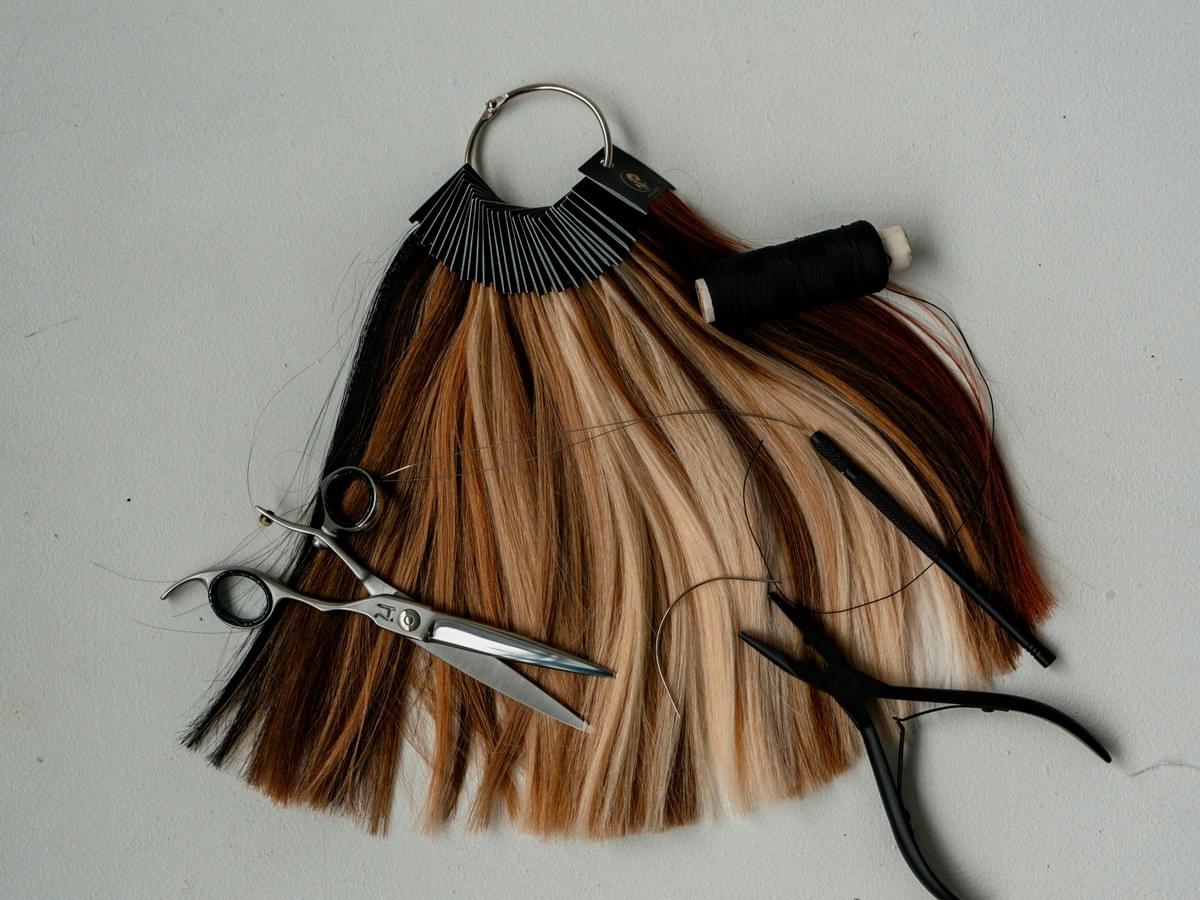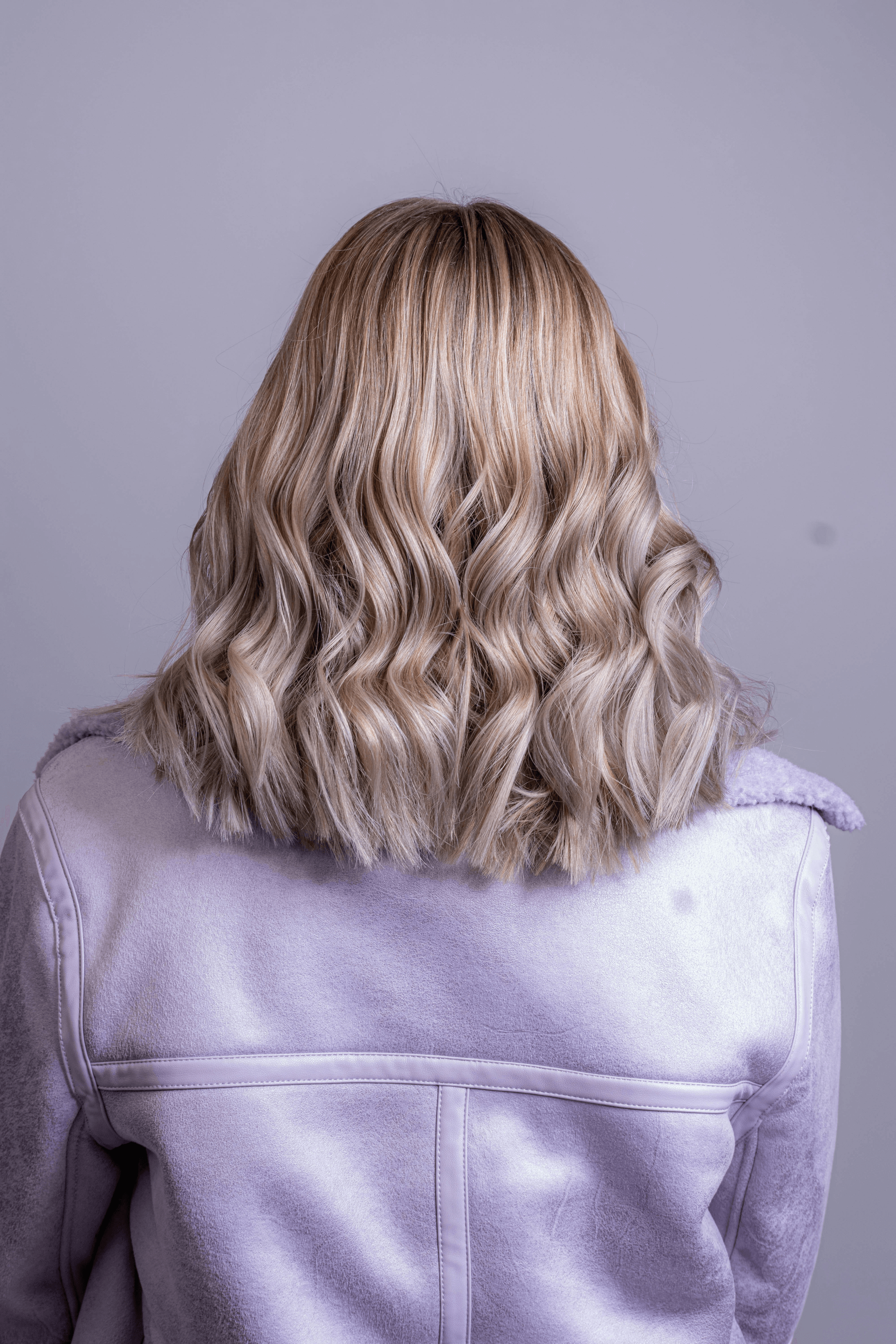Introduction

Hair is more than just a crown we wear; it’s a reflection of our identity and style. Understanding the nuances of hair density is crucial for anyone looking to enhance their hair game, whether you're considering wigs or simply trying to embrace your natural locks. This guide will delve into the fascinating world of low density vs high density hair, exploring what natural hair density truly means and why it matters.
Understanding Hair Density Basics
At its core, hair density refers to the number of hair strands on your scalp per square inch. It’s not just about how thick each strand is but rather how closely packed they are together. Knowing your hair density can help you make informed decisions about styling, cutting, and caring for your unique mane.
Importance of Knowing Your Hair Density
Understanding your hair density is essential because it influences everything from hairstyle choices to maintenance routines. For instance, if you have low-density hair, you might find that certain styles work better than others in creating volume and fullness. Conversely, high-density hair can require different products and techniques to manage its thickness effectively.
Overview of Low Density vs High Density Hair
When we talk about low-density vs high-density hair, we’re essentially discussing two ends of a spectrum that significantly affect how our hairstyles look and feel. Low-density hair tends to appear finer and may require specific styling tricks to create the illusion of fullness, while high-density hair often has a rich texture that can be both a blessing and a challenge when it comes to care and styling options. By understanding these differences, you’ll be better equipped to celebrate your unique strands rather than compare them unfavorably against others.
What Is Natural Hair Density?

Understanding natural hair density is crucial for anyone looking to care for their locks effectively. It’s not just about how thick or thin your hair feels; it’s about the number of hair strands on your scalp. This distinction between low density vs high density hair can significantly impact styling, maintenance, and overall appearance.
Defining Hair Density in Simple Terms
Hair density refers to the number of individual strands of hair per square inch on your scalp. In simple terms, if you have a lot of hair strands packed closely together, you have high-density hair; if your strands are more spaced out, that’s low-density hair. Knowing what natural hair density you have helps tailor your approach to care and styling.
Why Hair Density Matters for Everyone
Hair density matters because it influences how products work on your hair and the styles that suit you best. For instance, low-density vs high-density hair can dictate whether you need lightweight products or heavier creams to achieve desired results. Additionally, understanding your density can help prevent damage and promote healthier growth through appropriate care practices.
Common Misconceptions About Hair Density
One common misconception is that thicker-looking hairstyles always indicate high-density hair; this isn’t necessarily true! Techniques like teasing or using volumizing products can create the illusion of fullness on low-density vs high-density hair types. Another myth is that everyone with curly or coily textures automatically has high density—this isn't always the case as curl patterns also play a significant role in perceived volume.
What Factors Affect Hair Density?

Understanding what factors affect hair density is essential for anyone looking to embrace their natural hair. Hair density isn't just a matter of how much hair you have; it’s influenced by a variety of elements ranging from genetics to personal care practices. Let’s dive into the specifics and uncover how low density vs high density hair can be shaped by these factors.
Genetics and Ethnic Background Influence
Genetics plays a crucial role in determining your natural hair density, which can vary significantly across different ethnic backgrounds. For instance, individuals of African descent often have tightly coiled hair that may appear less dense due to the curl pattern, while those of Asian descent may have straighter strands that give an impression of higher density. Understanding these genetic influences helps clarify why some people naturally experience low-density vs high-density hair without any external factors at play.
Moreover, family history can provide insights into your own hair characteristics, including thickness and overall volume. If your parents had low-density hair, there's a good chance you might too! This genetic predisposition highlights the importance of understanding what is natural hair density for yourself.
Age and Hormonal Changes Impact
As we age, hormonal changes can significantly impact our hair's health and density. For example, fluctuations in hormones during puberty or menopause can lead to variations in thickness and growth patterns, often resulting in lower overall density as one ages. This makes it essential to recognize how age-related changes affect not only your appearance but also how you approach low-density vs high-density hair care.
Additionally, conditions like thyroid imbalances or other health issues can further exacerbate changes in your natural hair density. Being aware of these shifts allows individuals to adapt their routines accordingly and make informed decisions about styling and maintenance based on their current state. So if you're wondering how to measure and tell hair density as you age, consider these hormonal influences.
Hair Care Practices and Their Role
The way we care for our locks plays an undeniable role in determining our natural hair density over time. Poor practices such as excessive heat styling or harsh chemical treatments can lead to breakage or thinning—resulting in lower perceived density despite having initially thick strands! Therefore, understanding the differences between low-density vs high-density hair becomes crucial when choosing products that promote healthy growth.
On the flip side, adopting nourishing routines that include regular trims, deep conditioning treatments, and gentle handling techniques can help maintain or even enhance your current level of density. It's vital to recognize that consistent care not only affects aesthetics but also contributes positively toward long-term health—so choose wisely! If you're curious about how to measure and tell hair density accurately through various methods available today, remember: healthy practices yield healthier results.
Low-Density Hair vs High-Density Hair: What Are the Differences?

When it comes to understanding low density vs high density hair, the differences can be quite striking. Low-density hair often appears more sparse and may lack volume, while high-density hair is typically fuller and more abundant. Knowing these distinctions can help you choose the best hair care practices and styles suited to your unique hair type.
Characteristics of Low-Density Hair
Low-density hair is characterized by a smaller number of strands per square inch on the scalp, which can lead to a more delicate appearance. This type of hair often feels fine or thin, making it prone to looking flat or lifeless without proper styling techniques. Additionally, low-density hair might struggle with holding curls or volume due to its lighter weight and reduced thickness.
People with low-density hair may find that their scalp is more visible compared to those with high-density locks. This visibility can sometimes lead individuals to seek out products that add volume and texture, as well as hairstyles that create the illusion of fullness. Recognizing these traits is essential when considering what factors affect hair density and how they play into your overall look.
Traits of High-Density Hair
On the flip side, high-density hair boasts a substantial amount of strands packed closely together on the scalp, creating a lush appearance full of body and bounce. This abundance often translates into thicker strands that can hold styles better—curls stay put longer, and updos have a fuller silhouette. High-density hair types typically enjoy versatility in styling options due to their natural volume.
However, maintaining high-density locks does require extra effort; thicker strands may be prone to tangling or frizzing if not properly cared for. People with this type of density often invest in moisturizing products that combat dryness while ensuring their tresses remain manageable. Understanding these traits helps clarify why distinguishing between low density vs high density hair is so important for effective care routines.
Visualizing Density Through Hair Styles
Visualizing low density vs high density hair through various hairstyles can provide valuable insights into how each type behaves under different styling conditions. For instance, low-density hairstyles might benefit from layers or texturizing techniques that enhance movement without overwhelming fine strands—think soft waves or gentle curls that add dimension without excess weight.
Conversely, individuals with high-density hair can experiment with bolder styles like voluminous updos or thick braids that showcase their natural fullness beautifully. Both types offer unique opportunities for creativity; however, knowing how to measure and tell hair density will ultimately guide you toward selecting styles that flatter your specific texture best.
To sum it up, recognizing the differences between low-density and high-density hair allows you not only to appreciate your natural beauty but also empowers you in choosing suitable hairstyles and care routines tailored just for you!
How to Measure and Tell Hair Density?

Understanding how to measure and tell hair density is crucial for anyone looking to embrace their natural locks or select the perfect wig. Whether you're curious about low density vs high density hair or simply want to know more about what is natural hair density, there are several methods available. Let’s explore some DIY techniques, visual aids, and professional methods that can help you determine your hair density effectively.
DIY Techniques for Measuring Hair Density
Measuring your hair density at home can be a fun and enlightening experience! One popular method involves taking a small section of your hair and placing it on a flat surface next to a ruler; if the section covers less than half an inch of the ruler, you likely have low-density hair. Alternatively, you can do a simple water test: fill a glass with water and place a strand of clean, dry hair in it; if it sinks quickly, you might be dealing with high-density hair.
Another DIY technique involves the ponytail method: gather all your hair into a ponytail using an elastic band. If your ponytail measures less than two inches in circumference, it's indicative of low-density hair; anything over three inches suggests high-density locks. These hands-on approaches not only help you determine where you stand on the spectrum of low-density vs high-density hair but also empower you with knowledge about what factors affect hair density.
Using Visual Aids to Determine Density
Visual aids can serve as fantastic tools when trying to gauge your natural hair density! You might consider looking at images that showcase different styles suited for low-density vs high-density hair—like layered cuts versus fuller styles—to get an idea of where your own mane fits in. Observing how various hairstyles behave on different densities will give you insight into what characteristics define low-density versus high-density hairstyles.
Additionally, comparing your own strands against visuals in magazines or online resources can clarify common misconceptions about what is natural hair density for different individuals. For instance, many people mistakenly believe that all thick-looking hairstyles are associated with high-density locks; however, styling techniques can create volume irrespective of actual strand count! This visual comparison helps demystify differences between low-density and high-density options while enhancing understanding regarding how to measure and tell hair density effectively.
Professional Methods for Accurate Measurement
If you're serious about finding out your exact natural hair density, seeking professional advice may be worth considering! A skilled hairstylist typically uses specialized tools like scalp analyzers or magnifying glasses that provide precise measurements beyond simple observation techniques used at home. These professionals understand the nuances between low-dense vs high-dense textures better than most amateurs could hope to achieve.
Moreover, salons often have access to advanced products that assess not just thickness but health status too—helping identify any underlying issues affecting overall appearance or growth potential related directly back into what factors affect hair density overall! By consulting experts who specialize in understanding Low-Density Hair vs High-Density Hair: What Are the Differences? you'll gain invaluable insights tailored specifically towards achieving optimal results based on individual needs!
Choosing the Right Wig for Hair Density

Selecting the right wig can feel like navigating a maze, especially when considering low density vs high density hair. Understanding your natural hair density is crucial in making an informed choice that complements your look and feels comfortable. With so many options available, it's essential to know how to choose a wig that suits your specific hair density needs.
Comfy Wigs: A Perfect Fit for All Densities
When it comes to comfort, wigs designed for various densities can make a world of difference. For those with low-density hair, lighter wigs are often more suitable as they won’t weigh down your natural locks or cause discomfort. Conversely, high-density hair wearers may prefer wigs with more volume and texture to match their fuller appearance seamlessly.
Choosing comfy wigs involves considering materials that breathe well and fit snugly without being too tight. Lace fronts and silk tops can provide a natural look while ensuring the wig feels good throughout the day. Remember, whether you're exploring low-density vs high-density hair options, comfort should always be at the forefront of your decision-making process.
Tips for Selecting Wigs Based on Density
Selecting a wig based on your hair density requires some thoughtful considerations. First off, understanding what factors affect hair density—like genetics or age—will guide you in choosing a style that mirrors your natural look. For low-density hair, opting for layered styles can create an illusion of fullness without overwhelming your natural strands.
On the flip side, if you have high-density hair, consider wigs with thicker wefts for added volume and durability. Pay attention to color and texture; selecting shades close to your own will enhance authenticity regardless of whether you’re dealing with low-density or high-density options. Ultimately, it's all about finding that perfect balance between style and what truly suits you.
Maintaining Natural Looks with the Right Wig
Once you've chosen a wig that fits well with your natural hair density, maintaining its appearance is key to achieving that effortless look everyone desires! Regular cleaning and conditioning will keep both synthetic and human-hair wigs looking fresh while prolonging their lifespan—just like you would care for your own locks!
Styling techniques also play an important role; gentle heat styling tools can help shape the wig without causing damage—ideal when working with different densities! Remember to keep in mind the differences between low-density vs high-density hair when styling; lighter hairstyles work better on lower densities while fuller looks suit higher densities nicely.
In summary, choosing the right wig involves understanding how to measure and tell hair density effectively while keeping comfort at heart! With these tips in hand, you'll be ready to rock any hairstyle confidently!
Conclusion
Understanding hair density is more than just a beauty trend; it’s a key component of hair care and styling that empowers individuals to make informed choices. Whether you have low density vs high density hair, knowing how these differences affect your hair’s behavior can be liberating. This knowledge allows you to select the right products, styles, and even wigs that complement your natural features.
Why Hair Density Knowledge Is Empowering
When you grasp the concept of natural hair density, it opens up a world of possibilities for managing and styling your locks. Knowledge about what factors affect hair density can help dispel myths and guide you toward better hair care practices tailored to your needs. Additionally, understanding low-density hair vs high-density hair equips you with the tools to celebrate your unique texture instead of comparing yourself to others.
Embracing Your Unique Hair Density
Every strand of hair tells a story, and embracing your unique density is part of that narrative. Whether you're rocking low-density or high-density strands, there's beauty in diversity, and each type has its own set of advantages. By learning how to measure and tell hair density accurately, you can appreciate what makes your hair special while also exploring options for enhancing its natural beauty.
Resources for Further Learning on Hair Density
If you're eager to dive deeper into the world of hair density, plenty of resources are available at your fingertips! From online articles discussing low-density vs high-density hair differences to videos demonstrating how to measure and tell hair density effectively—there's no shortage of information out there. Consider joining forums or communities focused on what factors affect hair density for shared experiences and tips from fellow enthusiasts who understand the journey.
